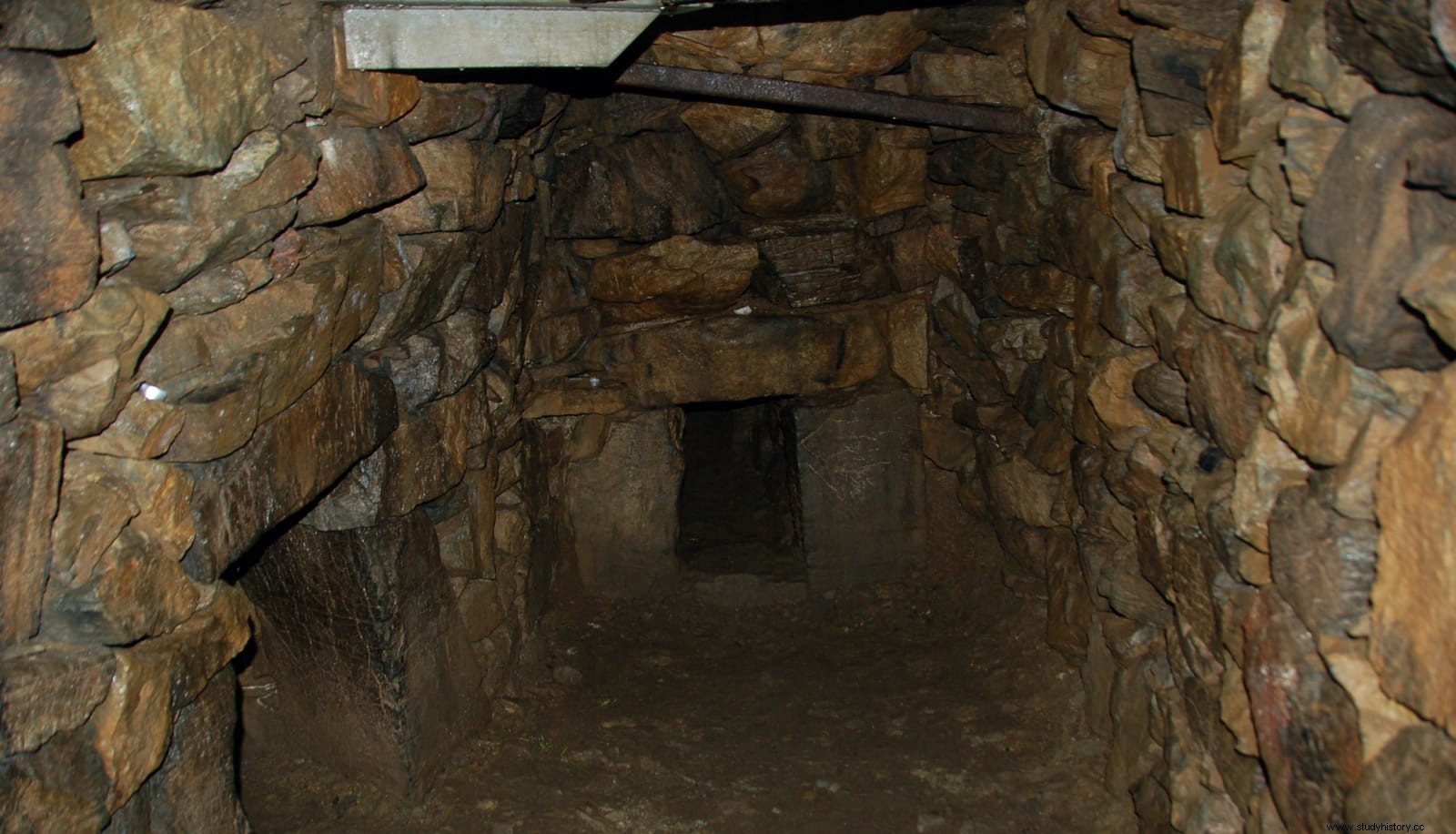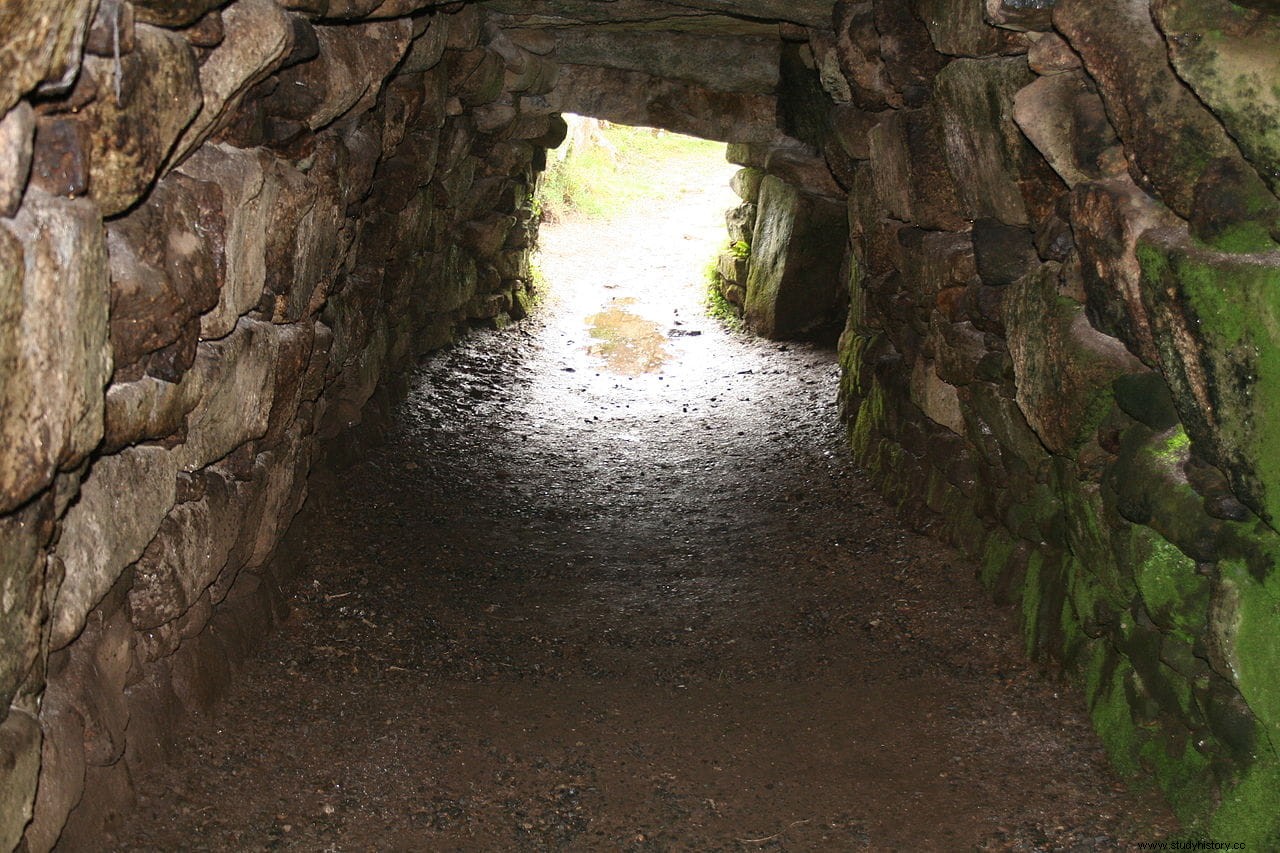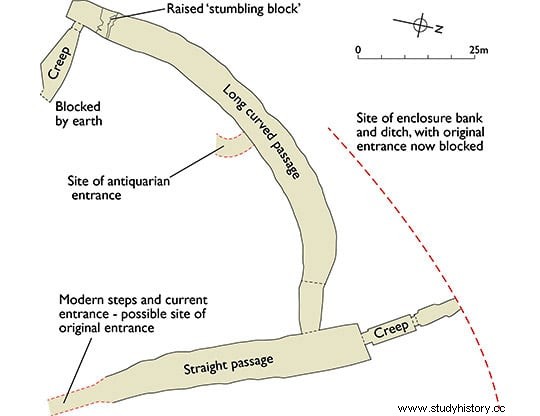Cornwall, located in the south-west of Great Britain, is full of prehistoric monuments. Up to 74 structures from the Bronze Age, 80 from the Iron Age, 55 from the Neolithic and one Mesolithic have been counted. Dolmens, menhirs, cairns, even stone circles of the same type as Stonehenge, are present here. To this incredible heritage we must add nine archaeological sites from Roman times and another 24 later. But perhaps the most intriguing of all are the 14 prehistoric tunnels that have been found so far, because archaeologists still do not know for sure what their function was .
There they are called Fogou , a word derived from Celtic ifócw and what does cave mean . They have certain similarities with the subterraneans, the name that designates structures from the Iron Age found in different places such as France, Scotland or Ireland. The difference is that the fogous they weren't just dug up, they were built . They had to dig deep trenches in the ground, then pave them with stone slabs and also line all the walls and ceiling with stones.
One of the great difficulties in studying the fogous is that for centuries they have been looted by collectors and purportedly emptied by people who later used them for various uses.

The largest and best preserved is that of Halliggye . It has a first chamber about 1.8 meters high and 8.4 meters long, which then narrows into another tunnel about 4 meters long but only 75 centimeters high, which makes it difficult to move around if it's not creeping. To the left of the first chamber there is another fork that extends 27 meters inwards, getting darker and darker until the end, which is marked by a stone protruding from the wall, practically preventing any further progress.
There are fogous in relatively good condition at Carn Euny, Boleigh, Pendeen and Trewardreva, and partially destroyed at Chysauster, Boden Vean and Lower Boscawell. The rest up to 14 known in Cornwall have been completely destroyed after their discovery.

The difficulty of access is one of the characteristics of the fogous which puzzles researchers. If they were places to hide, as some experts have pointed out, why make entry and exit so difficult?
On the other hand, those who built them do not seem to have wanted them to go unnoticed either. Most have lintels that would have been visible from the surface, making them poor hiding places in a pinch.
Other hypotheses consider them burial places , based on the writings of Reverend Richard Polwhele, who after exploring Halliggye's fogou in 1803 claimed that it contained urns. They were also found in 1861 by J.T. Blight and Sir Richard Vyvyan, who published a description of the fogou in the Journal of the Royal Institution of Cornwall in 1885.

These urns were already gone by the time archaeologists began investigating the fogous in later decades. Therefore, there is currently no evidence of burials, or cremation ashes, bones or any other remains, in any of the six fogous examined with modern archaeological techniques .
It is also unlikely that they were used as food stores, given their impractical design and the dampness of the interior. Nor to store valuables. The fact is that no object of this type has been found in any of them. A theory that would explain its function would be the ceremonial use . It is probable that only the religious elite were authorized to enter them, or that they were meeting places with the divinity. But virtually nothing is known about the religion or cults of those times.

Perhaps over the centuries the function of the fogous it was changing and adapting to the social, economic and cultural situation. In fact, all the fogous were found in the midst of prehistoric settlements dating back more than 3,400 years, which would indicate that they were of great importance to the community.
The dating of the fogous themselves places them in the Iron Age, between 1100 and 300 BC. about. Most have a south-west-northwest orientation, facing the prevailing wind in the area.
In 1991 a farmer discovered a large hole in his field, about five kilometers north of Halliggye. Five years later another appeared. Both led to the discovery of a new fogou, that of Boden , in which archaeologists hope to find answers that have not been found in previous ones.
